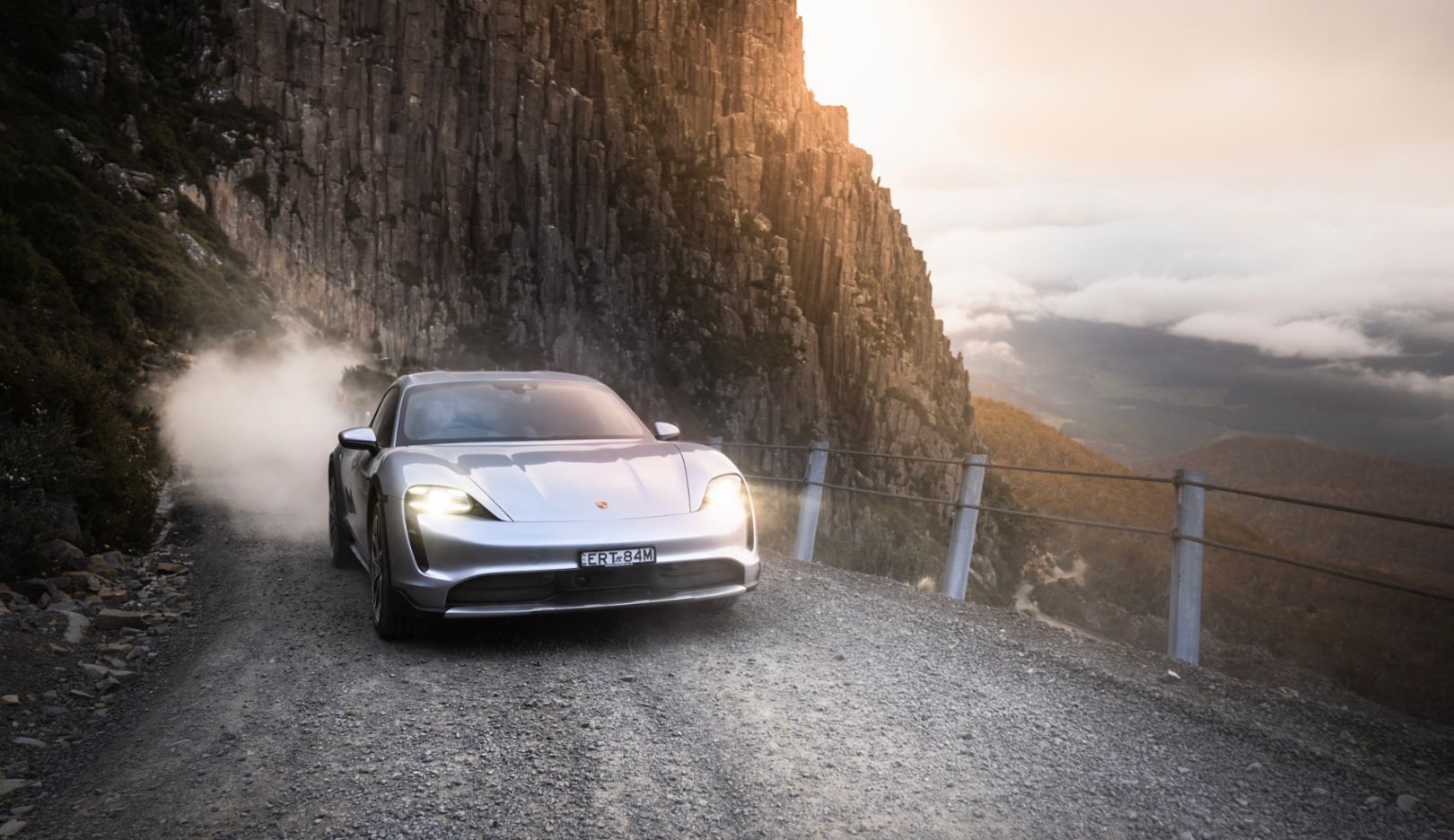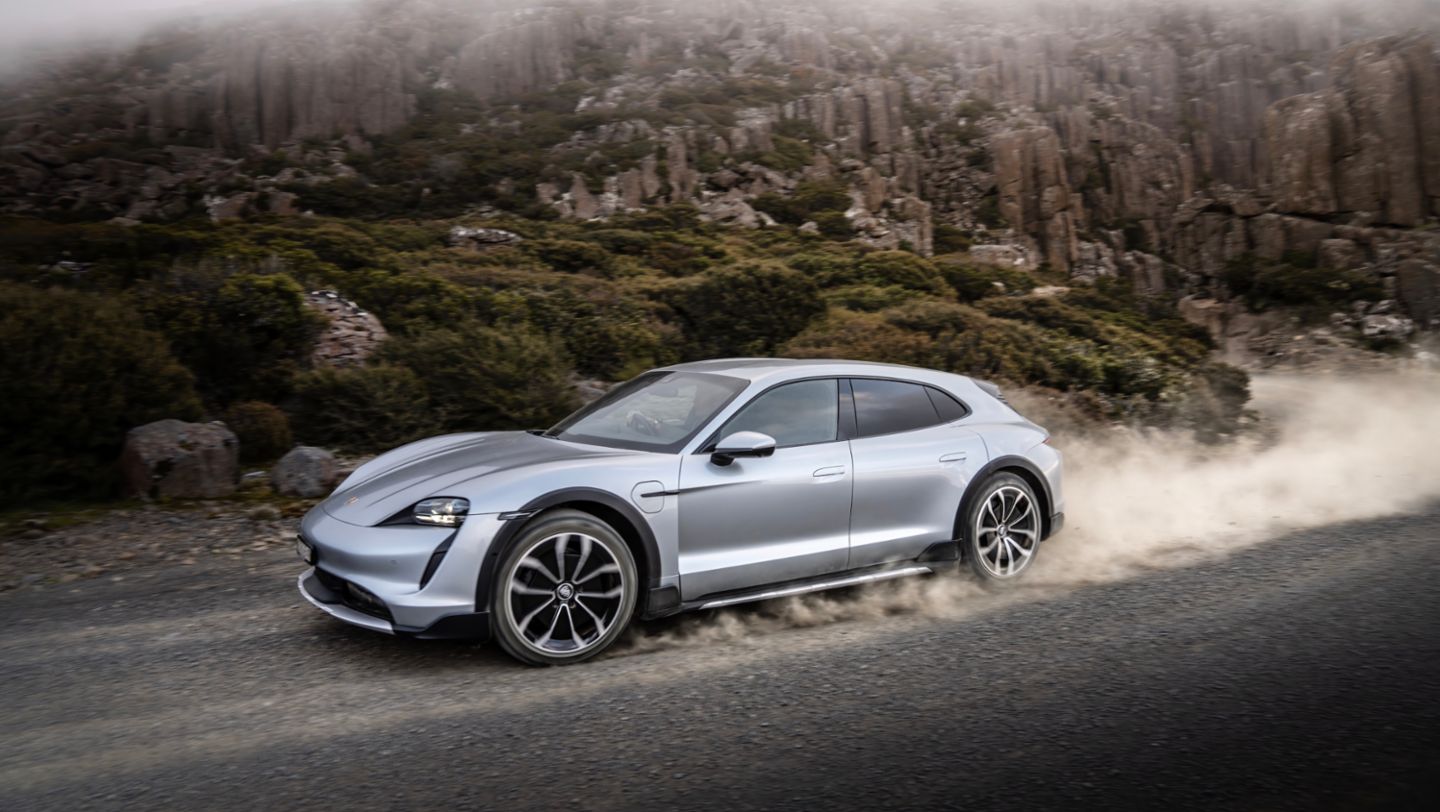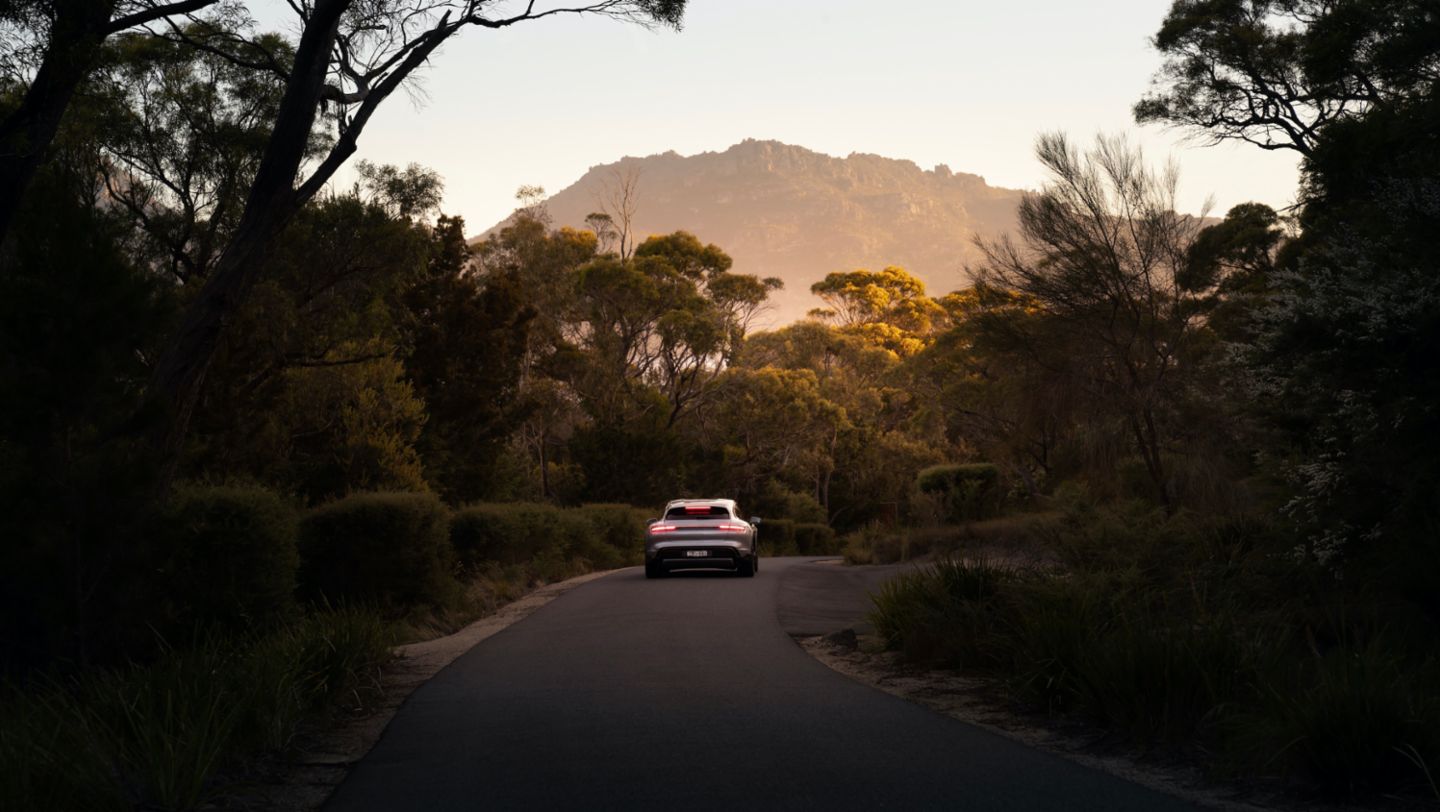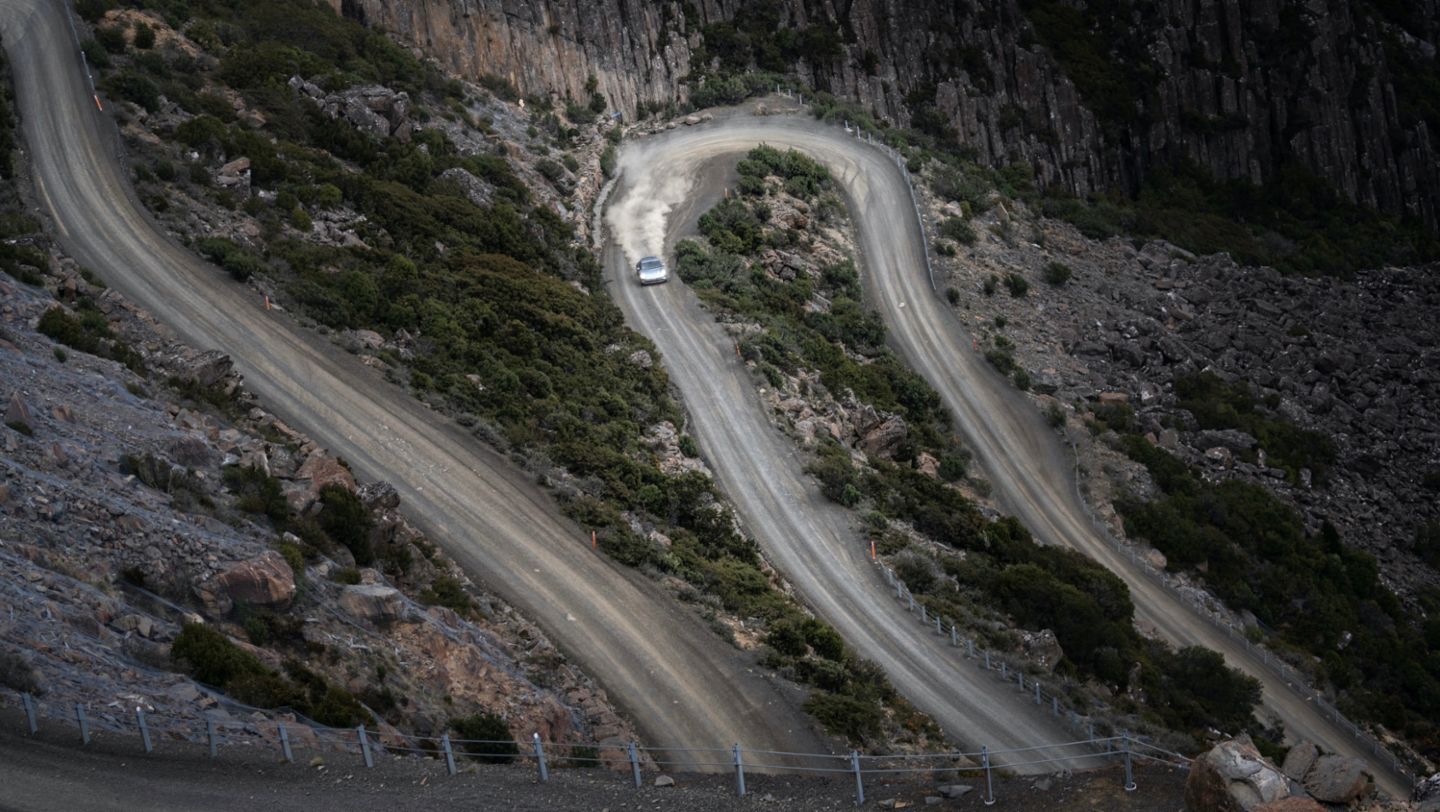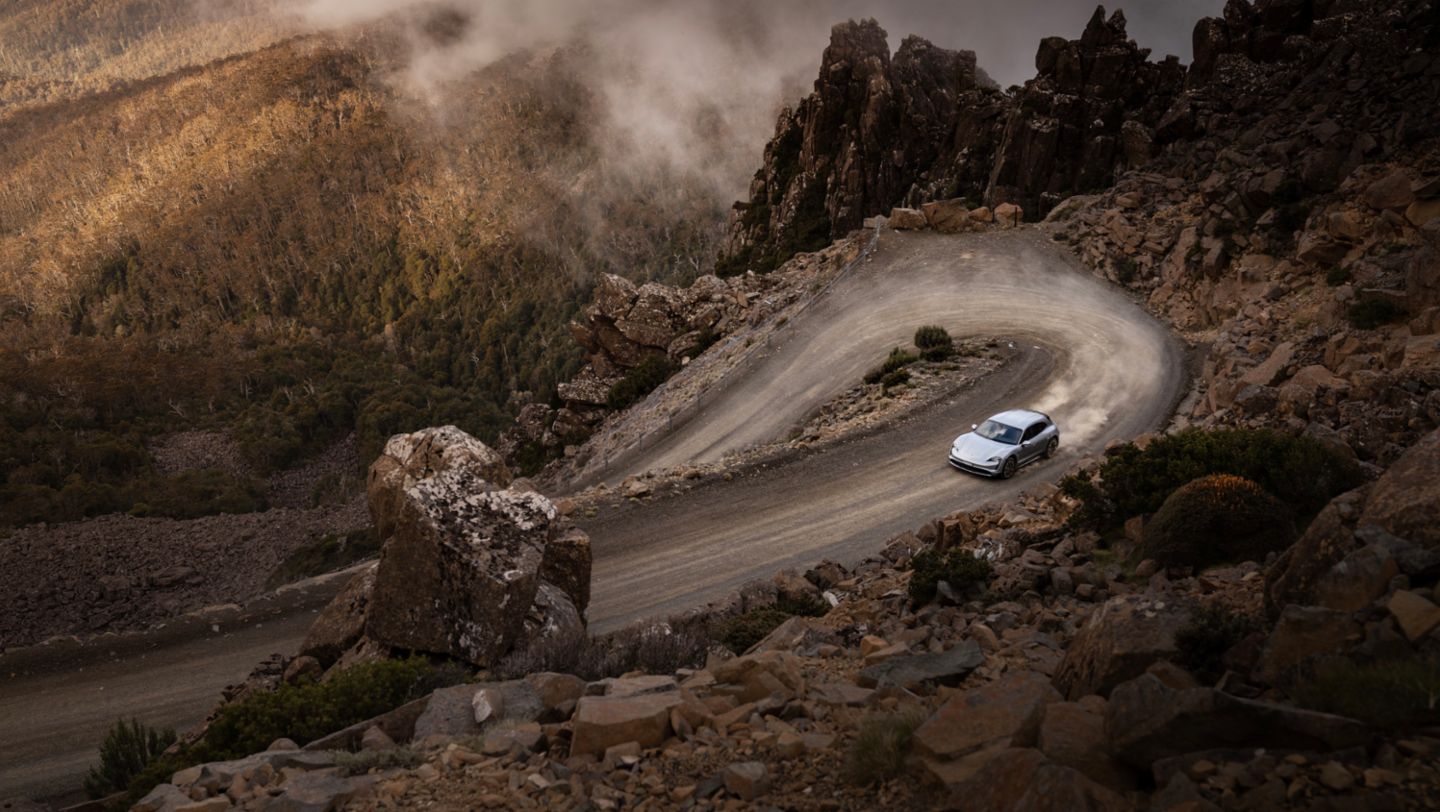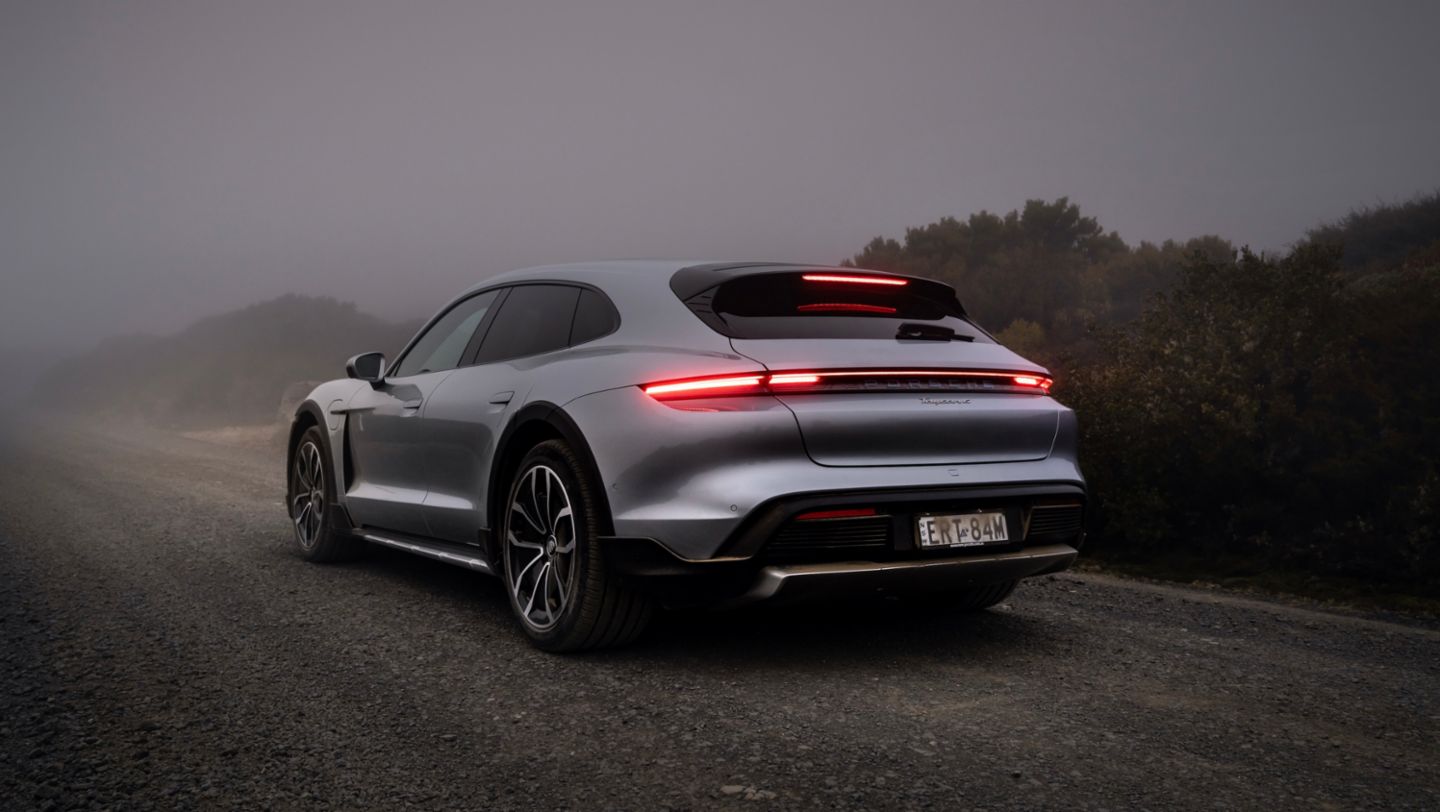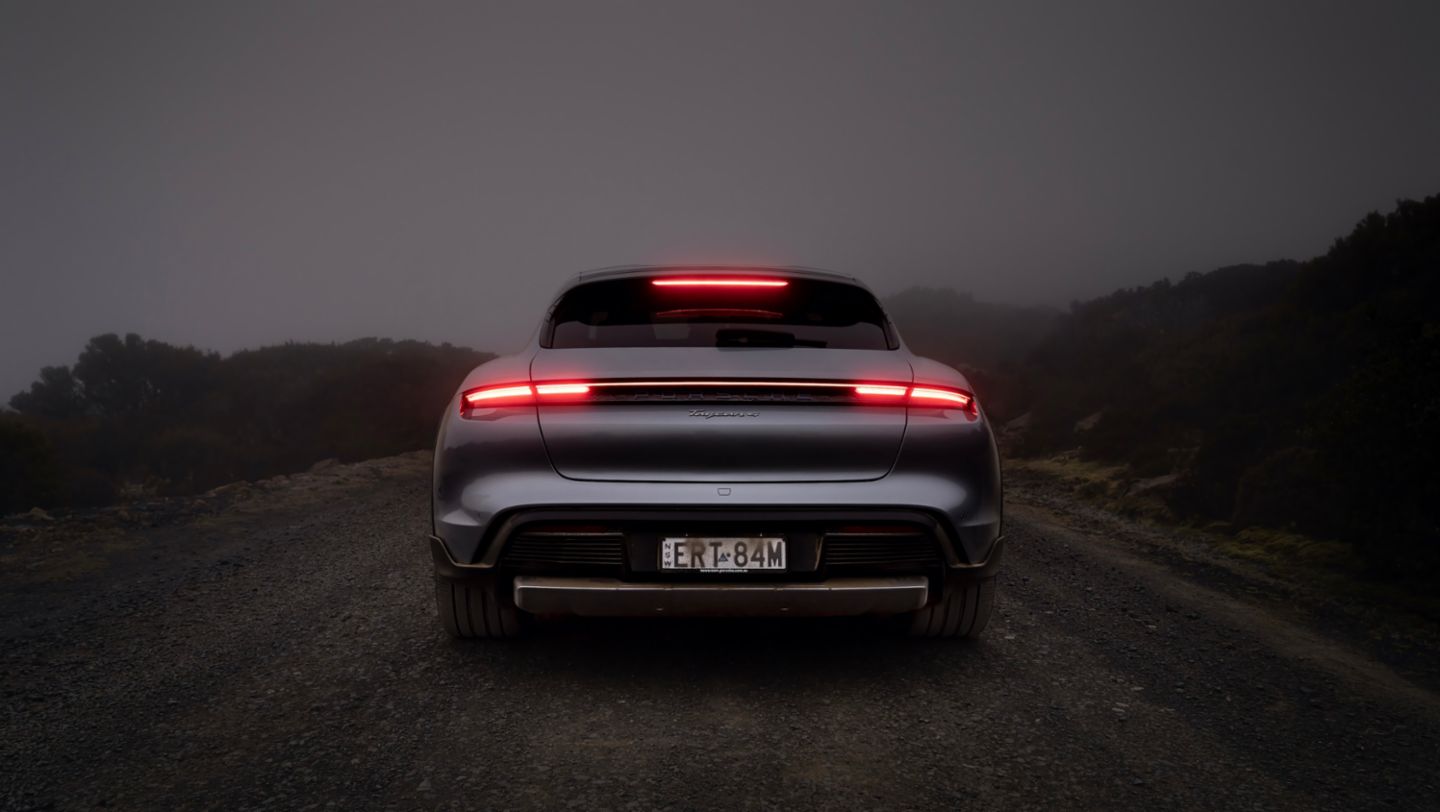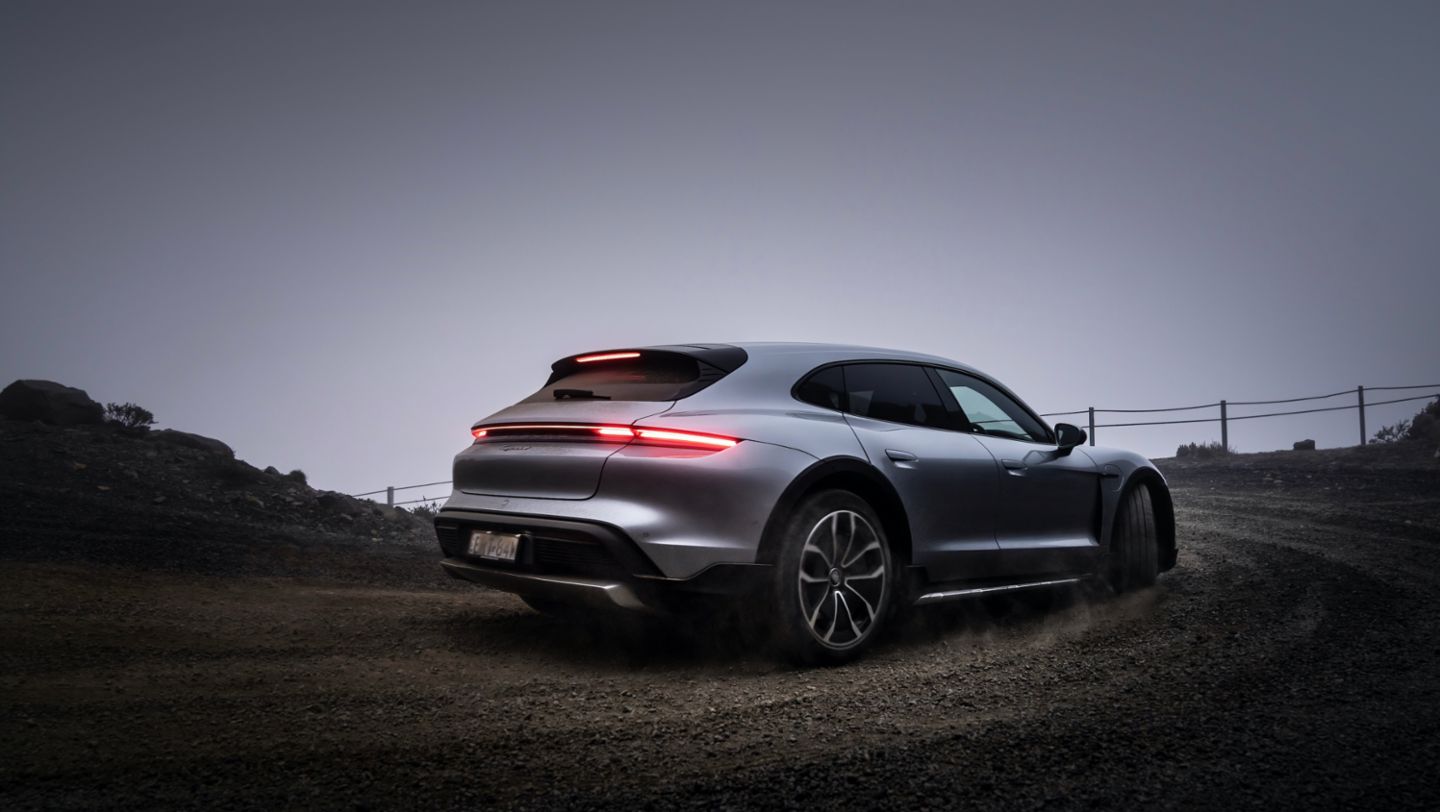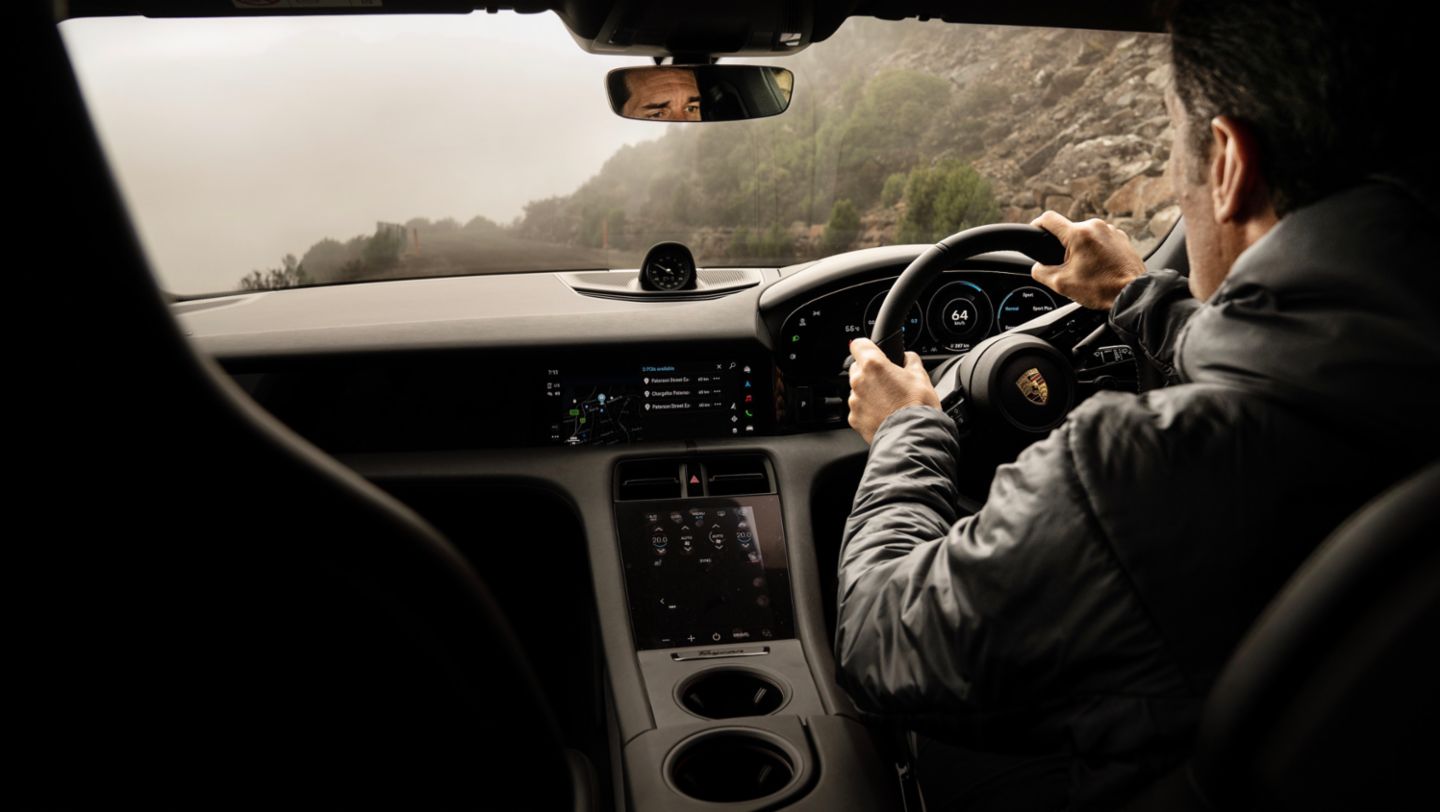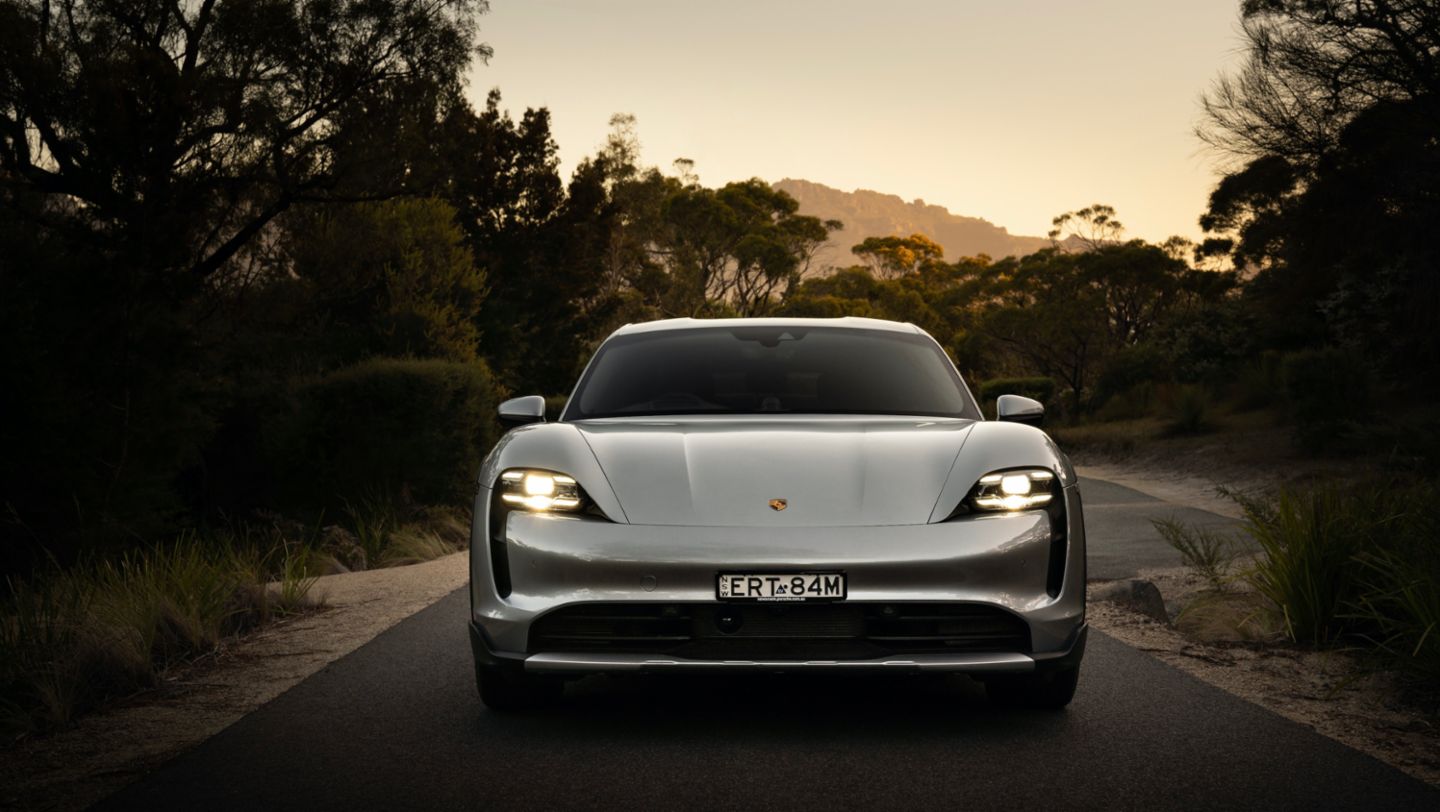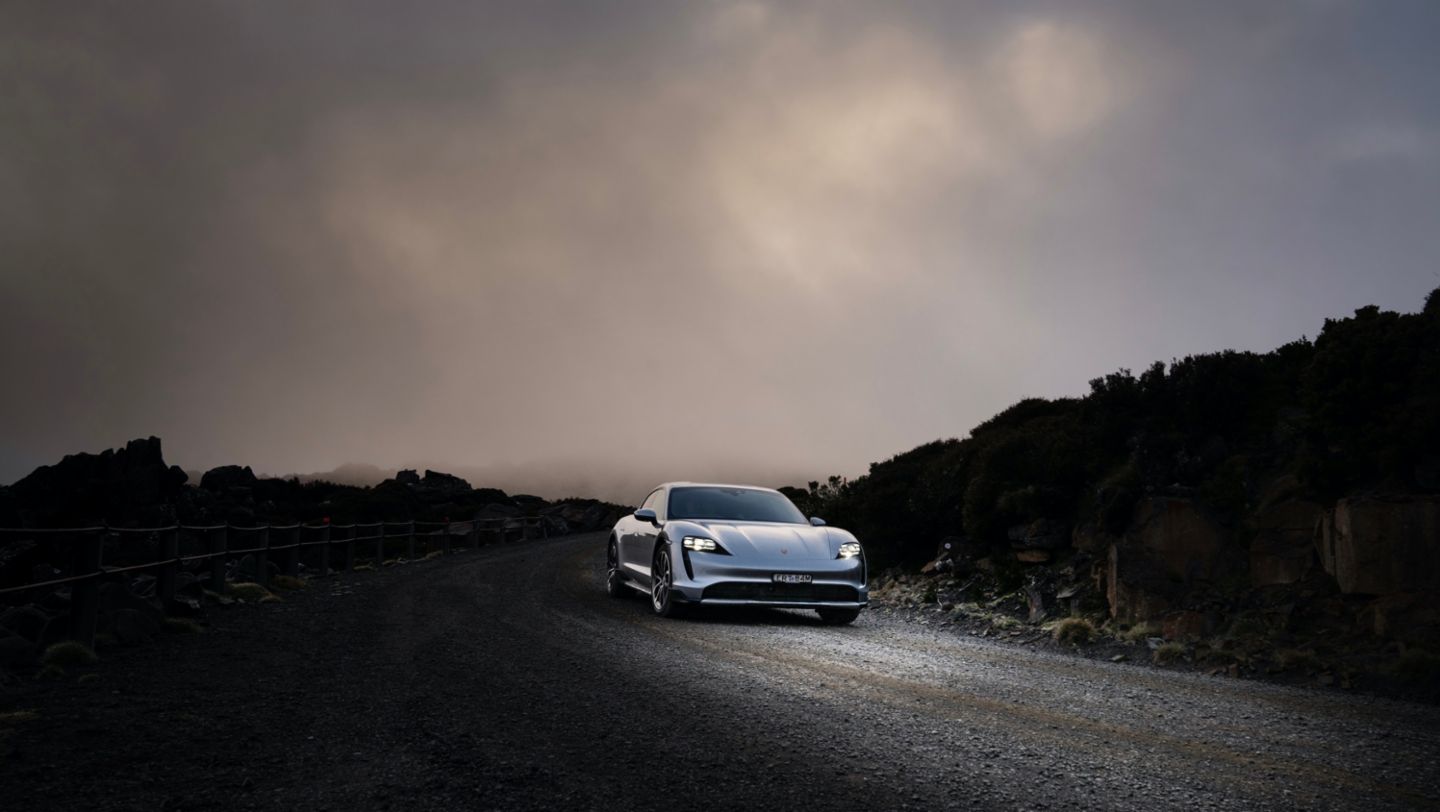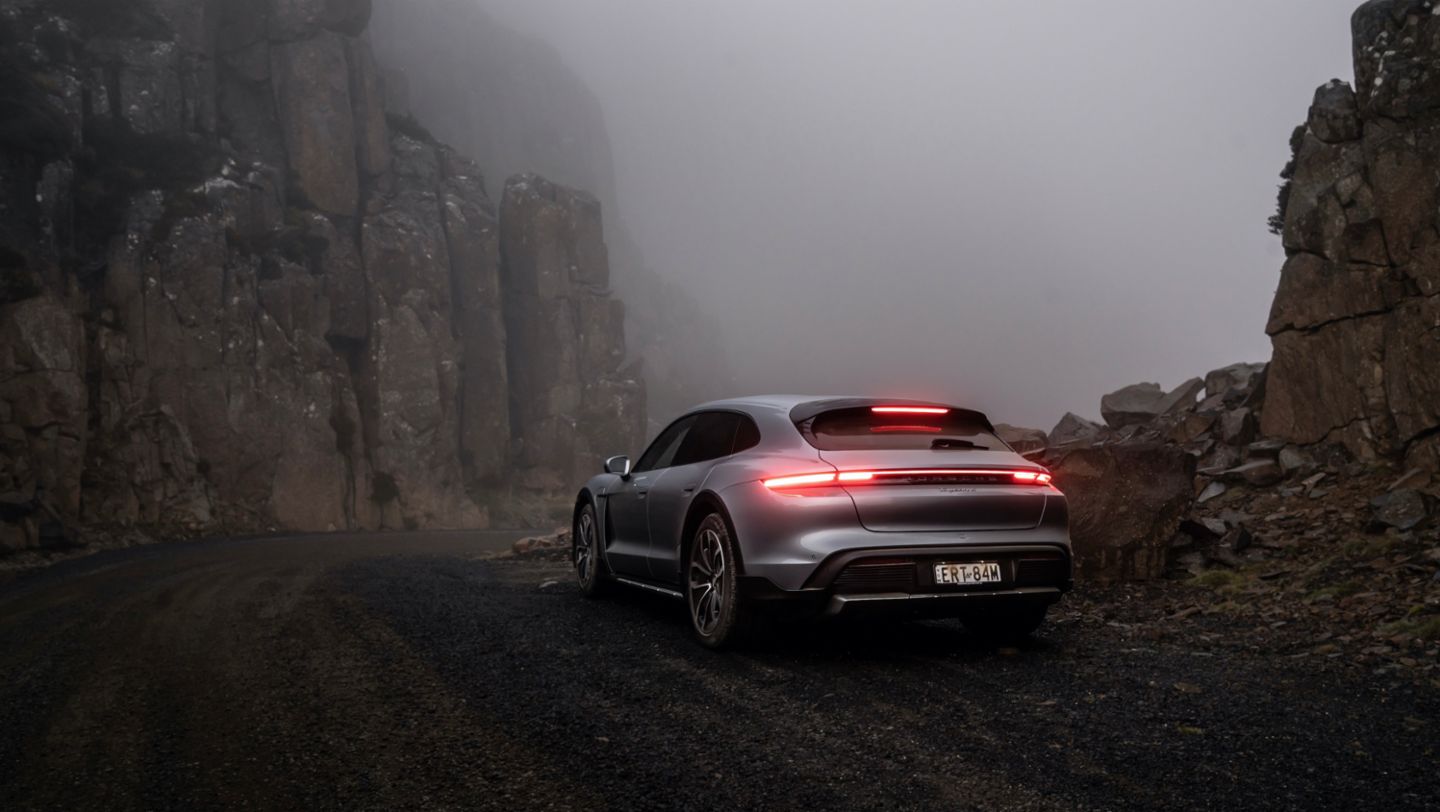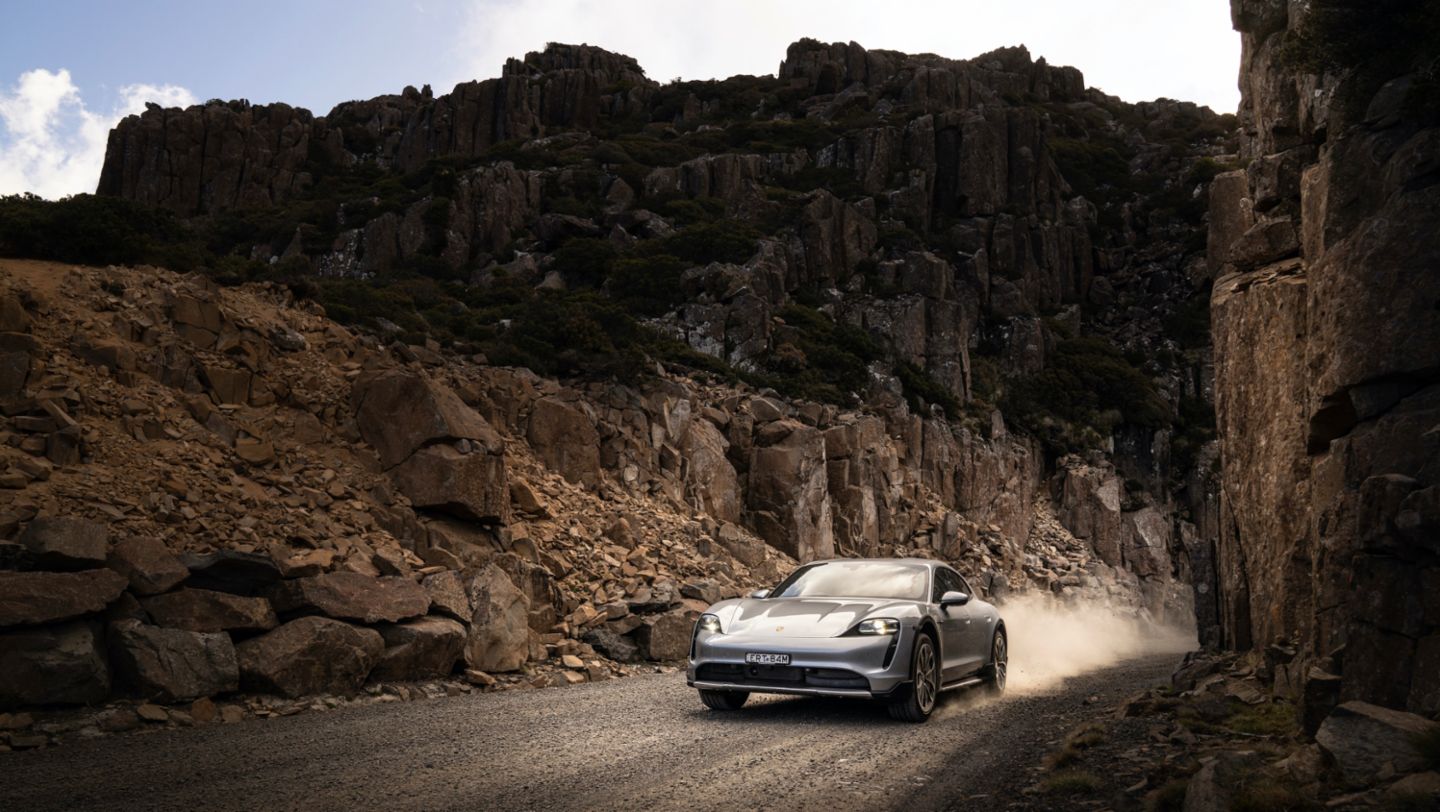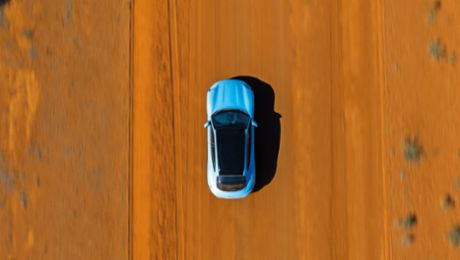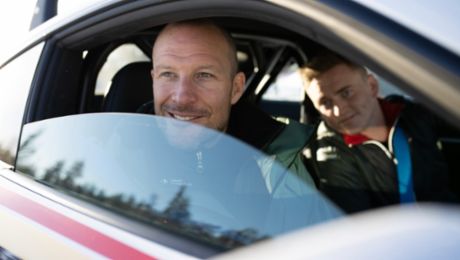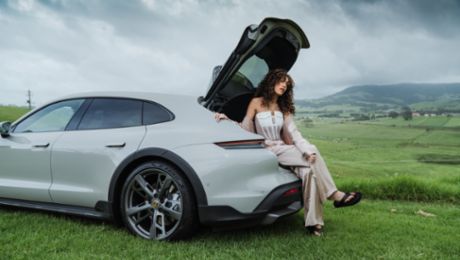Tasmania has plenty to boast about. Smaller than Ireland but larger than Switzerland, Australia’s island state is as spectacular as both, thanks in part to a network of roads that cut through its endless natural scenery. Porsche owners such as Mark Webber will tell you they are roads that were made for sportscars. “The asphalt is like a ribbon through these beautiful rolling hills,” he says while cresting a curve in Porsche’s all-electric Taycan Cross Turismo. “And the bonus is there’s so little traffic down here.”
It’s a driver’s paradise. Tasmania’s sinuous topography is the perfect canvas for this smorgasbord of bends, something the Porsche Brand Ambassador and former World Endurance Champion relishes.
“There are so many tight and twisty corners here. In an electric car you’ve got all that instant torque available, so the acceleration is sensational. And the Taycan’s build quality means there's no compromise on comfort for the driver, whether it’s on a longer trip or a shorter drive.”
Webber knows this part of world intimately. For more than 10 years, Tasmania was home to the driving ace’s former multi-day outdoor adventure race, the Mark Webber Challenge. This gruelling competition, which saw entrants tackle Tasmania’s rugged terrain, raised more than 2 million Australian dollars for charity and attracted athletes from around the world. The event symbolised Webber’s trademark ‘Aussie grit’, a nickname that encapsulates his intense drive, endurance and personal strength. It’s this potent combination that underpinned his successful motor racing career, which includes winning the FIA World Endurance Championship in 2015, as well as nine Formula One Grand Prix race wins.
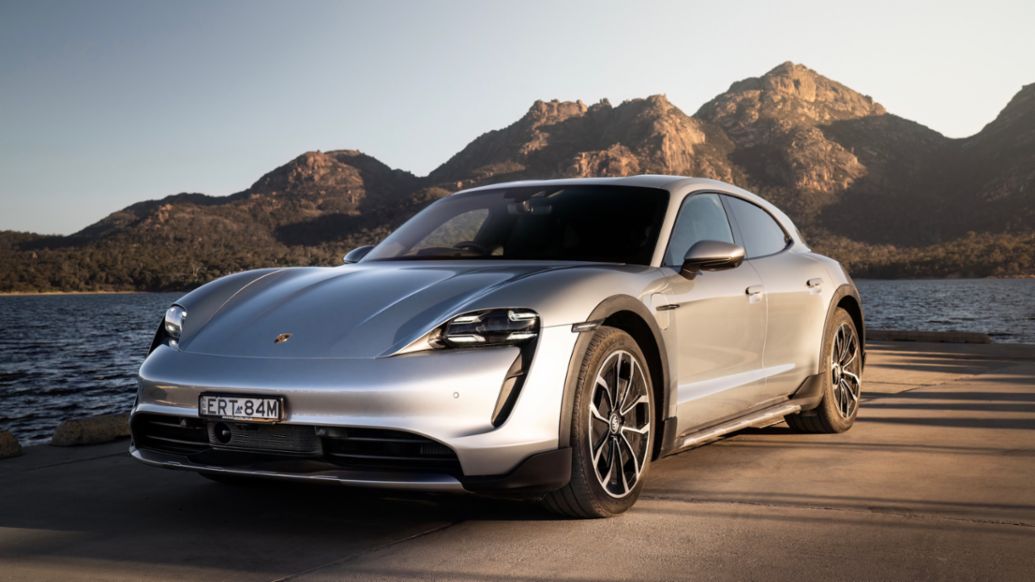
If there’s one section of Tasmania where drivers need personal grit, it’s Jacob’s Ladder – one of Webber’s favourite roads. Not only because it’s picturesque, but also because it’s a challenge for drivers and vehicles. Situated in the state’s North in Ben Lomond National Park, this collection of daring hairpins and hills cuts through the jagged rocky surroundings. It’s like the Stelvio Pass on a mountain of stalagmites.
“I very much enjoy driving it,” he says with a knowing smile. “It shares some similarities with Monte Carlo and even the Macau racetrack with its very tight hairpins. It’s got a European feel, but it’s in Australia.” The all-electric Taycan 4 Cross Turismo scales it without raising a sweat. Its 350 kW (Taycan 4 Cross Turismo: émissions de CO₂ en cycle mixte (WLTP) 0 g/km, consommation électrique en cycle mixte (WLTP) 24,8 – 21,4 kWh/100 km, Autonomie électrique combinée (WLTP) 416 – 488 km, Autonomie électrique en zone urbaine (WLTP) 518 – 597 km) of overboost power and availability of up to 500 Nm of torque means it eats the ascent like it was flat, making the steep climb seem effortless.
“It’s made for it. And the Taycan’s unique two-speed transmission gives you incredible acceleration.” Webber should know. His driving fingerprints are on the DNA of Porsche’s first all-electric sportscar.
“I was involved in the early development of the Taycan some years ago,” he says, speaking with noticeable pride. “It was fascinating to see Porsche Engineering’s no-compromise approach, and to see all the principles and practices from the best sportscar manufacturer in the world being applied to this special car.”
He is quick to emphasise ‘sportscar’ when he makes this point.
“When it comes to consistently and repeatedly deploying torque and performance, what the Taycan can do is extraordinary.”
And then there is the flexibility it offers, including its available driving range of up to 456 kilometres according to WLTP from a single battery charge.
“I love the Taycan Cross Turismo because I’m more of an outdoors guy. It’s got a lot of storage capacity in the rear and you can load it up. And the extra ground clearance lets you go into places that are more challenging for other cars."
“It’s great for Tasmania’s roads and for getting to the adventure spots this special wilderness offers. And driving in a place like this reminds you why we need to protect our environment for future generations. Porsche’s pioneering spirit means it continues to look at how it can be a leader and this includes delivering sustainable technologies, such as with EV powertrains and liquid eFuels with the potential to reduce CO2 emissions.”
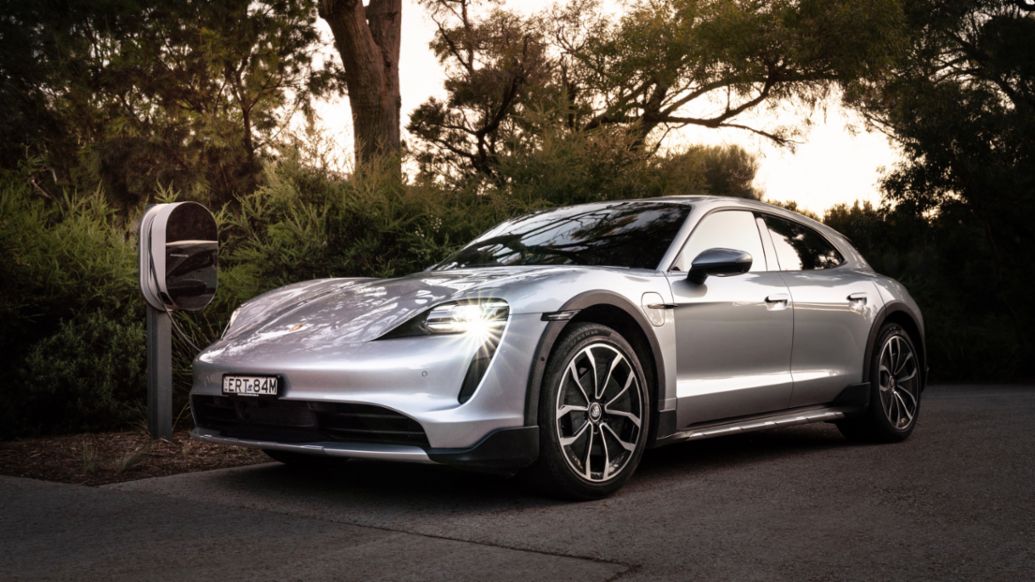
With regard to EV (electric vehicle) powertrains, Porsche is well underway. And to achieve the latter, Tasmania is playing an important role in the company’s plans. The sportscar maker’s commitment to a double-e path – e-mobility and e-Fuels – has seen Porsche invest in HIF Global LLC, a holding company of internationally active project developers of eFuel production facilities. HIF Asia Pacific, a wholly owned subsidiary of HIF Global, is underway with its plans to create a production facility for potentially almost carbon neutral eFuels located approximately 30 kilometres south of Burnie in Tasmania.
The HIF Tasmania facility will make a significant contribution to Porsche’s climate protection plans. It is expected to produce up to 100 million litres of carbon-neutral eFuels per year, reducing global CO₂ emissions by approximately 260,000 tons annually – the equivalent of decarbonising 52,000 cars on the road today.
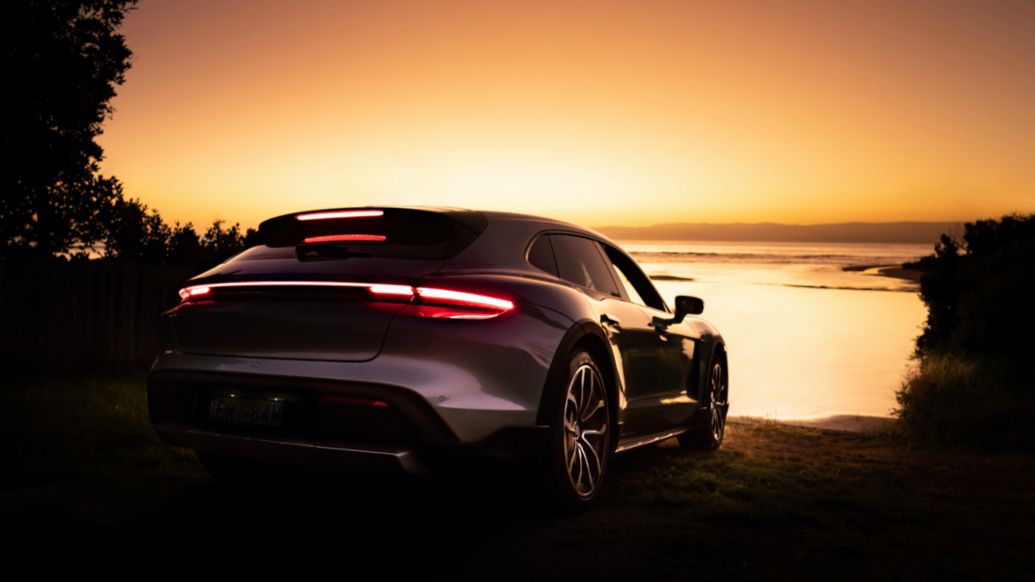
The facility has also been designed to be emissions free, with the water for electrolysis primarily extracted from biowaste.
“Using eFuels could be an effective way to reduce the CO₂ outputs of the existing combustion-powered cars currently on the road,” says Webber. “And this is an important contributor for drivers to make the transition to EVs over time. This approach goes hand-in-glove with the Porsche mindset – to be a leader – and it’s especially important in the next phase of our future.”
